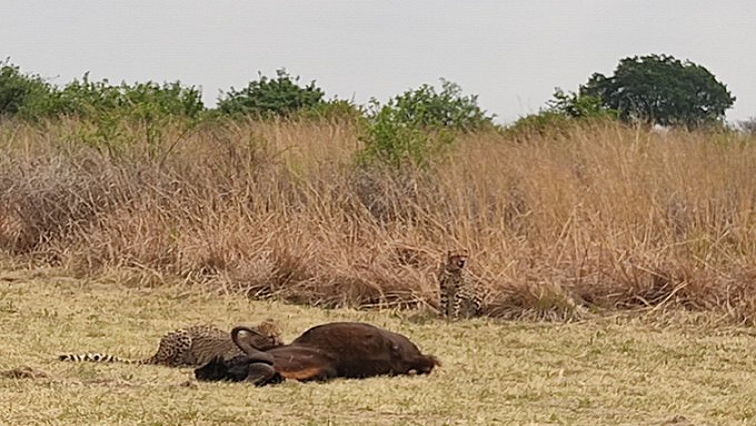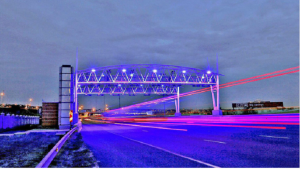Two young cheetahs are roaming the Rietvlei Nature Reserve in Pretoria after they were released from their holding camp on Monday morning.
Cheetahs are listed as vulnerable species with a declining population that currently stands at less than 7000 in Africa.
The animals are part of the Endangered Species Trust’s cheetah expansion project that resettles cheetahs in other parts of the country or the continent.
The female, Ndjozi, comes from the Western Cape and will remain at Rietvlei.
The Endangered Wildlife Trust’s Vincent van der Merwe says the male, Joe, comes from Limpopo but will be moved to a reserve in Mozambique in early 2021, after which two new males will then be re-introduced to keep Ndjozi company.
The two sub-adults were enticed out of the holding camp with a carcass of a Blue Wildebeest. Joe, the male cheetah’s hunger quickly got the better of him and he ventured out and started feasting. The female, Ndjozi, was a bit more nervous about the vehicles but Joe’s confidence encouraged her to also leave the holding camp. And that is exactly what Vincent van der Merwe, the cheetah meta-population manager of the Endangered Wildlife Trust, hoped will happen.
“Originally Ndjozi was the more friendly one that you could easily approach in the field, she was very relaxed. But after we moved her from the Western Cape to here she became very skittish. I think it was a very traumatic experience for her bringing her from the Western Cape here, 15-hours in a small crate. She’s a wild-born cheetah and has never been in a crate. And he as actually is a more wild cheetah. He came from a 350 km reserve in the Waterberg called Welgevonden Reserve. So he comes from a very wild situation but he got here and was very relaxed, very confident, very boisterous. He doesn’t take nonsense and can be quite aggressive. And he’s taught her to be less scared of human presence.”
2 #cheetas a male, Joe and female, Njozi were released in the #RietvleiNatureReserve today. Both are 19 months old. Njozi will hopefully be the beginning of a wild Cheetah breeding project in the reserve. #sabcnews pic.twitter.com/Ig6BPNapxx
— Liela Magnus (@LielaMagnus) October 5, 2020
Once Joe is relocated, two males will be introduced to Rietvlei to keep Ndjozi company.
“In early January next year we’re bringing two males with Botswana genetics that’s very unrelated genetics, and we hope they will mate with Ndjozi, which means Dream in Swahili. Hopefully, they will mate and produce offspring and then we’ll take that offspring from Rietvlei and move to the other 61 reserves we work with.”
The cheetah breeding project at Rietvlei came to a halt after the two females were removed and the males died of old age. The Rietvlei Reserve can only accommodate three adult cheetahs and the previous breeding group, together with their offspring, depleted the game population in the park. Dieter Labuschagne, the chairperson of the Pretoria East Branch of the South African Hunters and Game Conservation Association, says once the game populations were stabilised, they got involved to re-introduce the breeding program and financed the acquisition of Ndjozi.
“For us, it’s important to do a lot of conservation, especially cheetahs. There’s a lot of work to be done conservation wise on cheetahs. It was for us a privilege.”
Van der Merwe says breeding programs like Rietvlei help diversify the DNA of cheetah populations.
“So Rietvlei is just one of many reserves in the meta-population. Meta-population is the population of populations. And then what we do is because all these reserves are fenced there is no more natural gene flow, so we have to do human-mediated gene flow, basically putting the cheetah on the back of a bakkie and driving them between the reserves to prevent inbreeding. So the main objective of this project is to prevent inbreeding, and to increase cheetah numbers and to identify safe space for cheetahs. So this is a fenced reserve, it’s well managed, it’s well looked after, they got cheetah monitors. So it’s a safe space for cheetahs.”
The cheetahs will also help bring more visitors to the reserve and boost their income as the reserve was also closed during the lockdown and lost a lot of their income.






